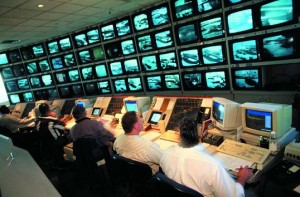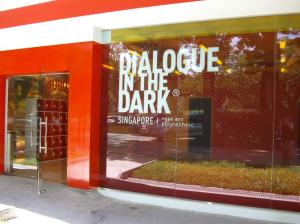 Social Media is such a new term, that I reject the possibility that there already could exist something that could be said to be a “Social Media guru. “ There is no such thing! You have to sort it out for yourself, and for your business
Social Media is such a new term, that I reject the possibility that there already could exist something that could be said to be a “Social Media guru. “ There is no such thing! You have to sort it out for yourself, and for your business
If you are a manager, or need to get your manager or customers to understand why one should get involved with Social Media activities, this blog posting might come handy. (a PPT presentation HERE) Maybe the buzz word itself might stand in the way to understand how to make business in Social Media? Social Media have had a sound to it that gives the associations towards the social aspect, as if that is a waste of time in a business context, yet another “cocktail party?” Another way of phrasing it might help to give a different immediate association: How to benefit from making the most out of “Relational Business” – is this going to improve the revenue streams, it this something the executive board would like to listen to?
We are all online. There’s a huge amount of statistics showing the mass of people being occupied in these Social Media, and I’ll not bore you with too much statistics. (if you want more THIS youtube video should be ‘it’ ) The important bit is to understand that in order to reach out to your audience, to the market you needed to be where they are and communicate in the language they are speaking. In Norway almost 2/3 of all Internet users (a penetration that’s approximately 85% of the population) are visiting and engaging in the popular community Facebook, weekly. That gives a huge market reach in the small nation of Norway. (Facebook has 2.262.820 registered members in Norway! Youtube (1.637.178), Wikipedia (1.508.333) and Twitter (228.444) to name a few. (source TNS Gallup, Interbuss Q2, 2010)
The Native Internet generation is going offline? Another research from Germany is very interesting (Spiegel.de). The research tells us that “The Native Internet generation” is logging off! What? Logging off the internet? – Well not quite so, but it shows that young people that have never lived without the Internet aren’t interested in it at all; It’s become; just a part of life – nothing to talk about. The time spent in digital media is still high and it’s very clear where their interests are. It’s to be involved with friends and their network, on- or offline. Being “online or offline” is an absurd term for them. Being in contact with their friends isn’t. The youth have Internet internalized, that means that it’s taken for granted. It also means that social relations and entertainment are more relevant terms for them. At the same time youngsters aren’t as digital competent as we might believe. How to gather information, or increase their level of knowledge, filter or evaluate, isn’t something they neither are competent nor interested in. From a business perspective, this is valuable information, indeed. It means that services, and offerings toward people that want to relate, that want to have easy answers without having to struggle, not to have to interpret the possible values, most likely will be the kind of offerings that will be preferred – internalized,” invisible” services.
Does this mean that Social Media have changed the rules of business – forever? I think yes, and no at the same time. I’ll give you a couple of concepts that are typical for what we will see a lot of the next months and coming years. – All new cars got an installed GPS these days, to help us navigate. We all have cell phones, some even synchronized with a cell phone device in the car. This means I have knowledge of who you are, and where you are. In other words I know the demographics, and I know your location. Furthermore, the new cars have a car computer, to help the service and maintenance of the car. This means that I know the state of your car, how much gas there is on your gas tank, and for how long the car has been moving. By this I can assume some desires you as a driver might have, even before you think of it yourself. (Remember what I said about the native internet generation? Their internalized relation to the internet, make them expect to be connected and that they are in touch and have their needs fulfilled without having to search and actively find out things by themselves) By combining the information I have ( in this example) I can provide syndicated solutions, options to solve unmet, and sometimes unconscious needs. In this example; to give you (on the screen of your GPS, or voice) the information of how little gas you have left, and suggest that you stop at “your” gas station (since I know what relation you – or rather your membership gasoline company card – have to which gasoline company). At the same time, I know that you have been on the road for almost four hours, and could benefit of some food. What I just set up is a Relational Business concept by syndicating existing solutions, providing target advertisement, Contextual and behavioral marketing. Another example could be “The internet connected running shoes.” No- it’s not science fiction, it’s there, ready to implement. – With a GSM, GPS and USB / wireless in your running shoes Nike/ Addidas or competitors easily can provide added value to their existing communities. By the way, it’s more likely that it would be marketed as: “The shoe with the chip that connects you”. In addition to being connected to an online training club, you can let your shoe “find” people to run along with, in the park (more fun to run with someone, than alone) The shoe can give you a hint, when it’s time to replace them with a new pair. Most likely you can subscribe to a rescue / insurance service that will find you if you go missing, while hiking. To be able to adjust the shoes sole pressure, depending on which surface you are running on to ensure that you don’t harm your feet, and also this set of connected shoes will be able to transfer the information about your running sessions to the Nike/ Addidas training club.
New value chains, or reorganizing the ones we have? What does this Relational Business, or Social Media as we have labeled it till now, do to other parts of the larger value chain? Newspapers used to be a distribution channel for advertisements. Newspapers experience a decreasing market of maybe as much as 10 – 20% drops in annual subscription revenues, 10- 30% in annual advertisement revenues. In the digital environment news organizations have only been able to “take back” this by approximately 5%. Along the value chain this also effect the companies dealing with advertisement, commercials and public relation, due to the fact that they have kept the traditional concepts of marketing and tried to “transfer” print advertisement business models into the digital environment.( read more about future advertisement, by Helge Tennø, HERE) about marketing in the digital environment) In the end this have resulted in corporations lost opportunities; reduced sales opportunities, and marketing effects. Everyone sees this and is trying to find solutions, and answers to the fact that the world have moved from a mass communication form to a communication form between the masses.
Show me the money? Surprisingly few are talking about, or explaining how to build the business cases for Social Media – or Relational Business as I prefer to define it. Everyone seems to think that it’s something “new”, we have to find – or “New economy” as the buzz word was back in the Dot.com years. Other people are sitting still, hoping this is yet another Hype, and that everything will come back to “normal” again. As I mentioned, I believe it’s a – yes, and no. Establishing sustainable business models and business cases for Social Media (– sorry –): Relational Business is like building any other business case where you have to follow the rules of the game you are in. And the rules of Relational Business are those of the internet!
ROI of Social Media The participants (customers) on Social Media channels, communities and the internet itself have stated (from the Cone 2008 Business in Social Media study fact sheet) that they would like companies to provide problem solving options (virtual customer services), they want to be able to give solicit feedback (fan pages, branded sites) and they want new ways to interact with brands. Nothing comes for free, Peter Kim / Business communication group. LLC, 2010, puts it this way: “while Social Media technologies seem to scale ok, “the programs – especially those with a labor-intensive component – don’t.” “There’s no real shortcut when it comes to holding authentic personal dialogues. That’s the point.” It will require a shift in how to use human resources in order to benefit from a Relational Business focus. In corporations, sales, marketing, support and call centre functions, Business intelligence, analytic personnel and so forth will have to act differently and get different work tasks done in their everyday life, much of it will be online activities. Advertisement companies, the news and broadcasting industry also will have to change in accordance to this, due to the fact that all are part of the same larger value chain, where the market have moved toward new arenas. Depending on what you want to achieve, each separate area /goal of business needs will demand their specific business cases. Some will follow the set up for a sales business case, others for increasing efficiency along the value chain. To show how radical the organizational change might have to be this might give you an idea:

Some of the activities you want to establish, might not have enough material, knowledge “best practice” and so forth, to enable you to build a “classical business case”; in that case – don’t! I would suggest that you make an audit of the situation today. This status is going to be used to evaluate success/ no result/ negative result in accordance to the goals you set up. Then take the three, four best “guestimates” of ideas and concept that you want to test. Measure effects during your test period, frequently. And stop the project if you start becoming sure that it won’t lead to the desired result. This effective, rapid development method, ensure that you quickly adapt to facts gathered during a testing phase. Keep in mind, some concepts doesn’t give positive results as quickly as you might wish for. Be realistic, and give your “babies” a fair chance! When doing something new – testing and failing is essential and every “failure” is of value – it help you from continuously doing the wrong thing. Another tip, ensure you have someone outside your organization watching what you are doing. It could be a mentor, a coach, a consultancy firm, just anybody you prefer, if they are able to help you “kill your darlings”, ask you the uncomfortable questions, and give you positive feedback along the road. Organizations have a tendency to look at everything from inside ( and not the point of view your customers have),keep to “old habits”, and by that being less able to act differently, staff also have a tendency to provide uncritical answers, due to the fact that their job and success factors depend on the managements thoughts of them and so forth.
Is there really anything new here? As I’ve said before; people haven’t changed much the past 28.000 years. It’s really not likely that people will do so the next coming few years either. The marketplace, such as the Farmers market has been around, most likely since we started farming. There is nobody arguing that the old marketplaces weren’t a Relational Businesses, where bargaining, split revenue models and so forth was in the core of how to conduct business those days. Furthermore the concept of Tupperware and home parties are more “modern” versions of Relational Business, and we are very much familiar with the effect they have had and revenues over the years. I’ve written a blog posting about www.musicnodes.no before and that is in essence a “Tupperware” concept – or as we would like to put a buzz word on it nowadays: “Viral marketing”. It’s “new” because it isn’t done this way before, but there is in reality no “New economy” in it. In other words, my statement is: “There is no Social Media – Internet is social and business on the Internet is social too!” (To be more accurate, Social Media Channels are one of many channels in a digital environment, frequently being a part of a larger digital value chain)
But the challenges aren’t over by this. There’s always a “But” isn’t there? The Copenhagen Institute for Futures Studies have stated: ”Everything that can be digitalized will be digitalized – and the value goes toward 0.- $”. – How to make business when the value is cero? Well if the cost of producing products and services are approximately cero, then there is a low risk in the cost aspects too? To provide a profit it has to come from “elsewhere”? Furthermore there is a promising statement by Kevin Kerry, the editor of Wired magazine: “The value is beyond free”. This means that we need to create added values for the customers in other manners than via the product/ service itself, doesn’t it? A few generic key words where “value beyond free” might be created from, is maybe worthwhile contemplating over:
People would like to pay for:
• Accessibility
• Navigation
• Security and consistency
• From “Good enough” (free) – to High quality (paid)
• Exclusivity (added by me) (Source: The Copenhagen Institute for Future Studies)
The benefit of sharing. This very blog posting is an example of what I’m talking about. I share this information, my viewpoints, free of charge, free for all to use, and to benefit from. Where’s the value for me, and the company I work for by doing so? Well information itself isn’t of great value, the ability to transform this to added value for my customers, requires something that is a scarce recourse; me and my colleagues network, competence, experience and our personality. This shouldn’t be confused with giving away strategies, the differentiators or business secrets; it doesn’t mean to give away any confidential customer information, of course. It means to share the information and common knowledge, and open up for conversations and discussions we all can learn from. The real value we offer our customers is what we learn, at work from our discussions and by that develop a mindset suitable to enable customers to create real value for their customers. (note: all of a sudden I went from “I” till “We” in my sentences, that’s because sharing means that Relational communication cannot be a individual process – it’s a social process shared between those involved) We have the tools at hand to enter a given scenario at our customers, coach and help them with all aspects of the transformational process that’s needed. We are at the moment working on a handful projects with customers, none of them with identical challenges, where our competence is stretched to the maximum. Sharing our knowledge as above, with as many as possible, will give us valuable discussions and we will gain more knowledge about other people’s / consultants achievements and will bring us as well forward into new projects and challenges providing our customers with real added value for their businesses.
 It’s the giants leading on the battle; it amazes me that the rest of us let them rule the ground alone.
It’s the giants leading on the battle; it amazes me that the rest of us let them rule the ground alone.




























 Perhaps content isn’t the future value for the media business. Perhaps the real value is the knowledge and management of users / participants and their behavior. We believe the media industry as a whole has already been subjected to “Disruptive Innovation” and the only way to survive in the industry is to adapt very quickly. The main point is to create added value for the sum of buyers in the digital universe, through business models that also provide revenue to media houses. The most important prerequisite for success in this is to have the right combination of business strategy, organization, competence, and not least technology platforms, that can realize the goals
Perhaps content isn’t the future value for the media business. Perhaps the real value is the knowledge and management of users / participants and their behavior. We believe the media industry as a whole has already been subjected to “Disruptive Innovation” and the only way to survive in the industry is to adapt very quickly. The main point is to create added value for the sum of buyers in the digital universe, through business models that also provide revenue to media houses. The most important prerequisite for success in this is to have the right combination of business strategy, organization, competence, and not least technology platforms, that can realize the goals 
